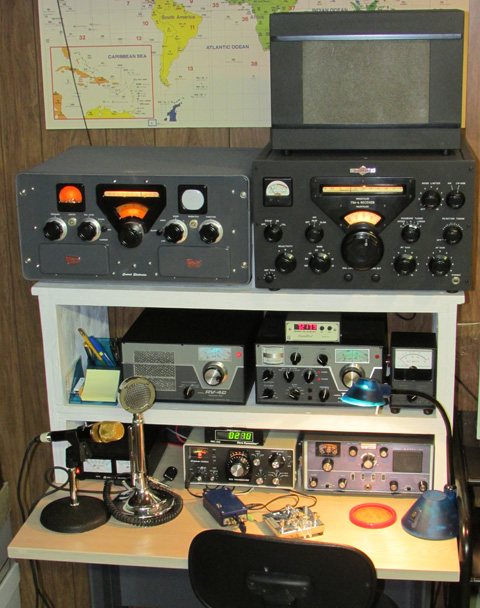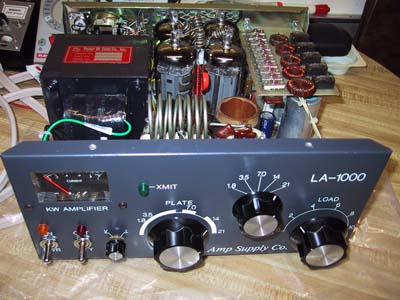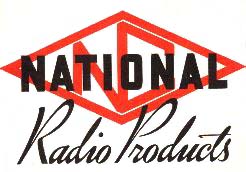
W8MHV's "Heavy Metal"
Station

This setup is the W8MHV "Heavy Metal" station, so called because old radio equipment like this is plenty heavy. I never intended to become a collector of old radios, but slowly I slipped into this facet of the ham radio hobby. I get satisfaction from making this old equipment look and function properly. All items of gear in my collection are in working condition and find regular use.
![]()

This is the classic amplifier that I use for both the main and "heavy metal" stations, the Sigma XR-3000D. This 1970s era amplifier was given to me by W8PG after the filament transformer blew. I replaced the transformer and other components that went with it. It is a brute, fully capable of the legal limit. By contrast is the Amp Supply LA-1000 in the third photo which I have converted to use Svetlana EL-509 output tubes. This linear is capable of 400 Watts output and is small enough to be used for portable operations.
![]()
The HRO-500 is my favorite receiver. Introduced in the early 1960s, it was a ground-breaking piece of equipment and the first solid state professional communication receiver to be marketed by a major manufacturer. It used germanium transistors and employed an innovative but complex design. A complete alignment requires extensive test equipment and plenty of time. But the effort results in a radio that sounds and works great. Of course, it lacks the dynamic range and frequency precision of modern rigs, but it is sensitive and readout to 1 kHz is possible.
![]()
I am also fond of Drake gear, and have owned 4-line equipment since 1970. This TR-4CWrit is one I acquired from Drake expert Jeff WA8SAJ. It is a late serial number example, perhaps manufactured on or ;near the last day of production. The TR-7, Drake's first entry in the solid state transceiver market, was enormously popular. Although it lacks modern refinements such as memories and DSP, it remains a pleasure to operate.
![]()
The KWM-380 was Collins' first and last effort to manufacture a solid state amateur radio transceiver. It was far ahead of its time in many ways. It employed a synthesized VFO, could be adapted to direct keypad entry and memories, and had pass-band tuning capability. However, the radio was very expensive and never gained the popularity of the KWM-2 and KWM-2A transceivers it replaced.



See even more "Heavy Metal" Gear